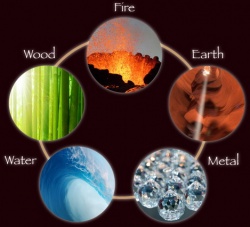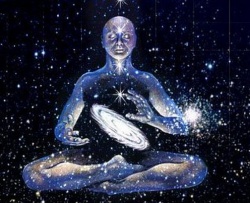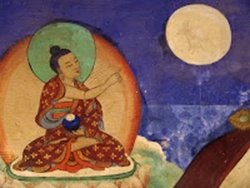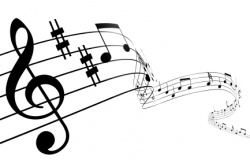Wu Xing
- See also :
- See also :
The Wu Xing, (五行 wŭ xíng) also known as the Five Elements, Five Phases, the Five Agents, the Five Movements, Five Processes, and the Five Steps/Stages, is a fivefold conceptual scheme that many traditional Chinese fields used to explain a wide array of phenomena, from cosmic cycles to the interaction between internal organs, and from the succession of political regimes to the properties of medicinal drugs. The "Five Phases" are Wood (木 mù), Fire (火 huǒ), Earth (土 tǔ), Metal (金 jīn), and Water (水 shuǐ). This order of presentation is known as the "mutual generation" (xiangsheng 相生) sequence. In the order of "mutual conquest" (xiangsheng 相勝) or "mutual overcoming" (xiangke 相剋), they are Wood, Earth, Water, Fire, and Metal.
"Wu Xing" is often translated as Five Elements and this is used extensively by many including practitioners of Five Element acupuncture. This translation arose by false analogy with the Western system of the four elements. Whereas the classical Greek elements were concerned with substances or natural qualities, the Chinese xing are "primarily concerned with process and change," hence the common translation as "phases" or "agents." By the same token, Mu is thought of as "Tree" rather than "Wood". The word 'element' is thus used within the context of Chinese medicine with a different meaning to its usual meaning. Evolution of language in this way is not without precedent. It should be recognized that the word 'phase', although commonly preferred, is not perfect. 'Phase' is a better translation for the five 'seasons' (五運 wŭ yùn) mentioned below, and so 'agents' or 'processes' might be preferred for the primary term xing. Manfred Porkert attempts to resolve this by using 'Evolutive Phase' for 五行 wŭ xíng and 'Circuit Phase' for 五運 wŭ yùn, but these terms are unwieldy. In some ways arguing for one one term over another is pointless because any single word is probably inadequate for translation of what is a concept.Some of the Mawangdui Silk Texts (no later than 168 BC) also present the Wu Xing as "five virtues" or types of activities. Within Chinese medicine texts the Wu Xing are also referred to as Wu Yun (五運 wŭ yùn) or a combination of the two characters (Wu Xing-Yun) these emphasise the correspondence of five elements to five 'seasons' (four seasons plus one). Another tradition refers to the wu xing as wu de 五德, the Five Virtues (zh:五德終始說).
The system of five phases was used for describing interactions and relationships between phenomena. After it came to maturity in the second or first century BCE during the Han dynasty, this device was employed in many fields of early Chinese thought, including seemingly disparate fields such as geomancy or Feng shui, astrology, traditional Chinese medicine, music, military strategy and martial arts. The system is still used as a reference in some forms of complementary and alternative medicine and martial arts.
The Elements
The five elements are usually used to describe the state in nature:
- Wood/Spring: a period of growth, which generates abundant wood and vitality
- Fire/Summer: a period of swellness, flowering, which overbrews with fire and energy
- Earth: the in-between transitional seasonal periods, or a separate 'season' known as Late Summer or Long Summer - in the latter case associated with leveling and dampening (moderation) and fruition
- Metal/Autumn: a period of harvesting and collecting
- Water/Winter: a period of retreat, where stillness and storage pervades
Cycles
The doctrine of five phases describes two cycles, a generating or creation (生, shēng) cycle, also known as "mother-son", and an overcoming or destruction (剋/克, kè) cycle, also known as "grandfather-nephew", of interactions between the phases. Within Chinese medicine the effects of these two main relations are further elaborated:
- Inter-promoting (mother/son)
- Inter-acting (grandmother/grandson)
- Over-acting (Ke cycle)
- Counter-acting (Reverse Ke)
Generating
The common memory jogs, which help to remind in what order the phases are:
- Wood feeds Fire
- Fire creates Earth (ash)
- Earth bears Metal
- Metal enriches Water (as in water with minerals is more beneficial to the body than pure water)
- Water nourishes Wood
Other common words for this cycle include "begets", "engenders" and "mothers".
Overcoming
- Wood parts Earth (such as roots; or, Trees can prevent soil erosion)
- Earth dams (or muddies or absorbs) Water
- Water extinguishes Fire
- Fire melts Metal
- Metal chops Wood
This cycle might also be called "controls", "restrains" or "fathers".
Cosmology and feng shui
According to Wu Xing theory, the structure of the cosmos mirrors the five phases. Each phase has a complex series of associations with different aspects of nature, as can be seen in the following table. In the ancient Chinese form of geomancy known as Feng Shui practitioners all based their art and system on the five phases (Wu Xing). All of these phases are represented within the Ba gua. Associated with these phases are colors, seasons and shapes; all of which are interacting with each other. Based on a particular directional energy flow from one phase to the next, the interaction can be expansive, destructive, or exhaustive. A proper knowledge of each aspect of energy flow will enable the Feng Shui practitioner to apply certain cures or rearrangement of energy in a way they believe to be beneficial for the receiver of the Feng Shui "Treatment".
Ba gua
The movements have also been correlated to the eight trigrams of the I Ching:
| Movement | Metal | Earth | Wood | Wood | Water | Fire | Earth | Metal |
|---|---|---|---|---|---|---|---|---|
| I Ching | Heaven | Earth | Thunder | Wind | Water | Fire | Mountain | Lake |
| Trigrams | ☰ | ☷ | ☳ | ☴ | ☵ | ☲ | ☶ | ☱ |
| Trigram hanzi | 乾 | 坤 | 震 | 巽 | 坎 | 離 | 艮 | 兌 |
| Trigram pinyin | qián | kūn | zhèn | xùn | kǎn | lí | gèn | duì |
Chinese medicine
The interdependence of Zang Fu networks in the body was said to be a circle of five things, and so mapped by the Chinese doctors onto the five phases. For instance, the Liver (Wood phase) is said to be the "mother" of the heart (Fire phase), and the Kidneys (Water phase) the mother of the Liver. The key observation was things like kidney deficiency affecting the function of the liver. In this case, the "mother" is weak, and cannot support the child. However, the Kidneys control the heart along the Ke cycle, so the Kidneys are claimed to restrain the heart.
The citation order of the Five Phases, i.e., the order in which they are cited in the Bo hu tong 白虎通 and other Han dynasty texts, is Metal, Wood, Water, Fire, and Earth. The organs are most effectively treated, according to theory, in the following four-hour periods throughout the day, beginning with the 3 a.m. to 7 a. m. period: Metal organs (see the list below), Earth organs, Fire1 organs, Water organs, Fire2 (the "non-empirical" Pericardium and Triple Burner organs), and Wood organs, which is the reverse of the citation order (plus an extra use of Fire and the non-empirical organs to take care of the sixth four-hour period of the day). These two orders are further related to the sequence of the planets going outward from the sun (Mercury, Venus, Mars, Jupiter, Saturn, or Water, Metal, Fire, Wood, and Earth) by a star diagram similar to the one shown above.
The sequence of the five elements (Traditional Chinese medicine):promotion, inhibition, Cheng (bullying), Wu (insult).
| Movement | Wood | Fire | Earth | Metal | Water |
|---|---|---|---|---|---|
| Planet | Jupiter | Mars | Saturn | Venus | Mercury |
| Mental Quality | Idealism, Spontaneity, Curiosity | Passion, Intensity | Agreeableness, Honesty | Intuition, Rationality, Mind | Erudition, Resourcefulness, Wit |
| Emotion | anger | happiness | love | grief, sadness | fear, scare |
| Zang (yin organs) | liver | heart/pericardium | spleen/pancreas | lung | kidney |
| Fu (yang organs) | gall bladder | small intestine/San Jiao | stomach | large intestine | urinary bladder |
| Sensory organ | eyes | tongue | mouth | nose | ears |
| Body Part | Tendons | Pulse | Muscle | Skin | Bones |
| Body Fluid | Tears | Sweat | Saliva | Mucus | Urine |
| Finger | index finger | middle finger | thumb | ring finger | little finger |
| Sense | sight | speech | taste | smell | hearing |
| Taste | sour | bitter | sweet | pungent | salt |
| Smell | Rancid | Scorched | Fragrant | Rotten | Putrid |
| Life | birth | youth | adulthood | old age | death |
| Animal | scaly | feathered | human | furred | shelled |
Celestial stem
| Movement | Wood | Fire | Earth | Metal | Water |
|---|---|---|---|---|---|
| Heavenly Stem | Jia 甲 Yi 乙 |
Bing 丙 Ding 丁 |
Wu 戊 Ji 己 |
Geng 庚 Xin 辛 |
Ren 壬 Gui 癸 |
| Year ends with | 4, 5 | 6, 7 | 8, 9 | 0, 1 | 2, 3 |
Music
The Yuèlìng chapter (月令篇) of the Lǐjì (禮記) and the Huáinánzǐ (淮南子) make the following correlations:
| Movement | Wood | Fire | Earth | Metal | Water |
|---|---|---|---|---|---|
| Colour | Green or Blue | Red | Yellow | White | Black |
| Direction | east | south | center | west | north |
| Basic Pentatonic Scale pitch | 角 | 徵 | 宮 | 商 | 羽 |
| Basic Pentatonic Scale pitch pinyin | jué | zhǐ | gōng | shāng | yǔ |
| solfege | mi | sol | do | re | la |
- The Chinese word 青 qīng, has many meanings, including green, azure, cyan, and black. It refers to green in Wu Xing.
- In most modern music, various seven note or five note scales (e.g., the major scale) are defined by selecting seven or five frequencies from the set of twelve semi-tones in the Equal tempered tuning. The Chinese "lǜ" tuning is closest to the ancient Greek tuning of Pythagoras.
Martial arts
T'ai chi ch'uan uses the five elements to designate different directions, positions or footwork patterns. Either forward, backward, left, right and centre, or three steps forward (attack) and two steps back (retreat).
The Five Steps (五步 wǔ bù):
- Jìn bù (進步) Forward step
- Tùi bù (退步) Backward step
- Zǔo gù (左顧, in simplified characters 左顾) ) Left step
- Yòu pàn (右盼 ) Right step
- Zhōng dìng (中定) Central position, balance, equilibrium.
Xingyiquan uses the five elements metaphorically to represent five different states of combat.
| Movement | Fist | Chinese | Pinyin | Description |
|---|---|---|---|---|
| Metal | Splitting | 劈 | Pī | To split like an axe chopping up and over. |
| Water | Drilling | 鑽 | Zuān | Drilling forward horizontally like a geyser. |
| Wood | Crushing | 崩 | Bēng | To collapse, as a building collapsing in on itself. |
| Fire | Pounding | 炮 | Pào | Exploding outward like a cannon while blocking. |
| Earth | Crossing | 橫 | Héng | Crossing across the line of attack while turning over. |
Tea ceremony
There are spring, summer, fall, and winter teas. The perennial tea ceremony ("perennial", literally means four steps or sequences that are linked together, each representing a season of the year) includes four tea settings (茶席) and a tea master (司茶). The tea settings are:
- earth, center incense, yellow, up and down
- wood, 春風 (Spring Wind), green, east
- fire, 夏露 (Summer Dew), red, south
- metal, 秋籟 (Fall Sounds), white, west
- water, 冬陽 (Winter Sunshine) black, north
Each tea setting is arranged and stands for the four directions (north, south, east, and west). A vase of the seasons' flowers is put on tea table. Sometimes if four tea masters are included then five chairs are arranged per tea setting, making a total of twenty plus the 4 tea masters equalling 24, which symbolizes the 24 solar terms of the Chinese calendar, and represents that nature continues or is perennial.









